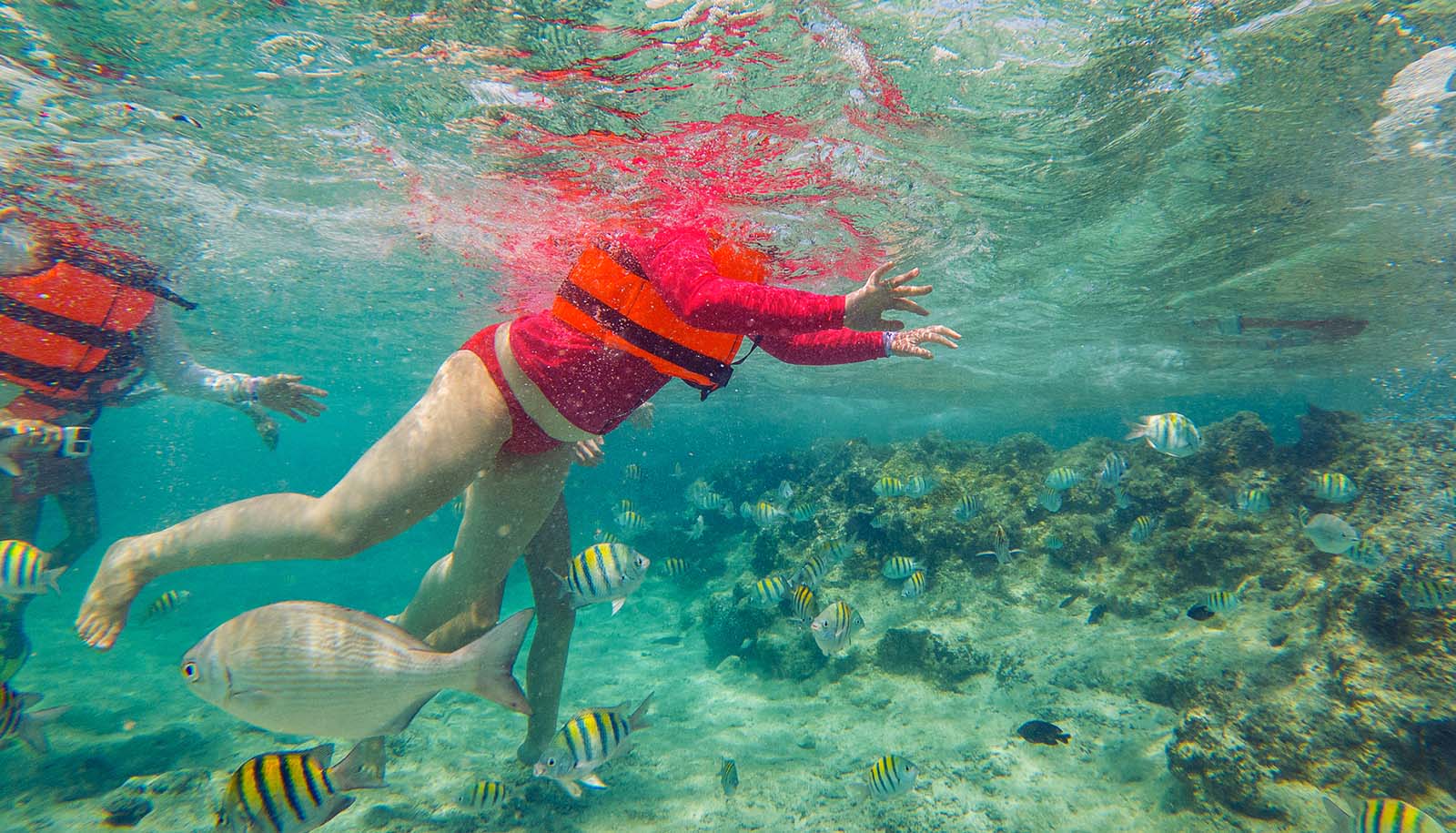
The sunscreens on coral reef-exploring tourists often contain a component that may speed up the death of the endangered ecosystems.
New findings in the journal Science indicate how this happens. The work could help guide the development and marketing of effective, coral-safe sunscreens.
“It would be a sad irony if ecotourism aimed at protecting coral reefs were actually exacerbating their decline,” says lead author Djordje Vuckovic, a PhD student in civil and environmental engineering at Stanford University. “My hope is that our research will help lead the way to developing coral-safe sunscreens.”
Up to 6,000 tons of sunscreen—more than the weight of 50 blue whales—wash through United States reef areas every year, according to the National Park Service. Scientists have known for some time that oxybenzone, an organic compound found in many sunscreens, can damage corals. As a result, sunscreens with this compound have been banned in the US Virgin Islands and Hawaii, the island nation of Palau, and Bonaire, an island municipality of the Netherlands, among other places.
However, the mechanisms by which oxybenzone does harm have largely remained a mystery, making it difficult to ensure that sunscreen components proposed as alternatives are truly safer for corals.
William Mitch, a professor of civil and environmental engineering at Stanford, became interested in the issue several years ago when he heard about Hawaii’s then-pending ban. He and John Pringle, a professor of genetics in the Stanford School of Medicine, began work to characterize the chemical and biological mechanisms by which oxybenzone harms corals.
In their new study, Mitch, Pringle, Vuckovic, and other researchers used anemones as surrogates for corals, which are harder to experiment with, as well as mushroom corals. Exposed to oxybenzone in artificial seawater under simulated sunshine, the anemones all died within 17 days, whereas anemones exposed to oxybenzone in the absence of simulated sunlight remained viable.
“It was strange to see that oxybenzone made sunlight toxic for corals—the opposite of what it is supposed to do,” says Mitch. “The compound is good at absorbing light within the waveband we tested, which is why it’s so common in sunscreens.”
After absorbing ultraviolet light, oxybenzone is designed to dissipate the light energy as heat, preventing sunburn. The anemones and corals, however, metabolized oxybenzone in such a way that the resulting substance formed damaging radicals when exposed to sunlight.
In addition to this vulnerability, the researchers found evidence for a coral defense mechanism. Symbiotic algae in corals appeared to protect their hosts by sequestering within themselves the toxins that corals produced from oxybenzone.
As ocean waters warm, stressed corals expel their algae partners, exposing bone-white coral skeletons. Thus, in addition to being more vulnerable to disease and environmental shocks, such “bleached” corals would be more vulnerable to the depredations of oxybenzone without their algae to protect them.
Oxybenzone may not be the only sunscreen ingredient of concern, the researchers warn. The same metabolic pathways that appear to convert oxybenzone into a potent toxin for corals may do something similar with other common sunscreen ingredients, many of which share similar chemical structures and so could form similar phototoxic metabolites.
Many sunscreens marketed as coral-safe are based on metals, such as zinc and titanium, rather than organic compounds, such as oxybenzone. Although these sunscreens are fundamentally different in how they function, it is not clear whether they are actually safer for corals, according to the researchers, who are planning to investigate the matter further.
Funding for the research came from the Stanford Woods Institute for the Environment’s Environmental Venture Projects program and the National Science Foundation.
Source: Stanford University